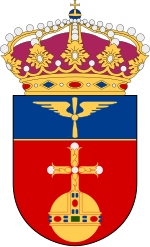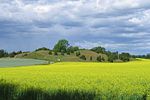Bälinge Church, Uppland
Church frescos in SwedenChurches converted from the Roman Catholic Church to the Church of SwedenChurches in Uppsala CountyChurches in the Diocese of Uppsala

Bälinge Church (Swedish: Bälinge kyrka) is a medieval church in Bälinge, Uppsala Municipality, Sweden. It is part of the Archdiocese of Uppsala (Church of Sweden).
Excerpt from the Wikipedia article Bälinge Church, Uppland (License: CC BY-SA 3.0, Authors, Images).Bälinge Church, Uppland
Kyrkbacken, Uppsala kommun
Geographical coordinates (GPS) Address Nearby Places Show on map
Geographical coordinates (GPS)
| Latitude | Longitude |
|---|---|
| N 59.945833333333 ° | E 17.529444444444 ° |
Address
Kyrkbacken
743 81 Uppsala kommun
Sweden
Open on Google Maps







